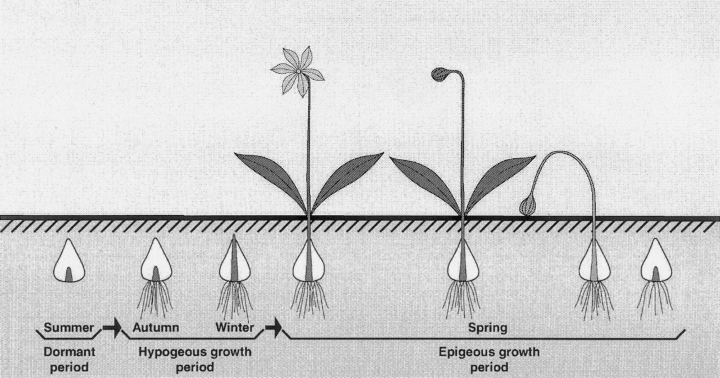Trillium. The very name is synonymous with spring wherever they grow. Even the non-botanically minded amongst us could probably pick one out of a lineup. This wonderful genus holds such a special place in my heart and I anxiously await their return every year. The journey from seed to flowering plant is an arduous one for a trillium and some may take for granted just how much time has elapsed from the moment the first root pushed through the seed coat to the glorious flowers we admire each spring. The story of a Trillium, like any other plant, starts with a seed.
As with many other spring ephemerals, Trilliums belong to that group of plants that utilize ants as seed dispersers. Once underground in an ant midden, a Trillium seed plays the waiting game. Known as double dormancy, their seeds germinate in two phases. After a year underground, a root will appear followed by an immature rhizome and cotyledon. Here the plant remains, living off of the massive store of sunlight saved up in the endosperm for yet another year. Following this second year underground, the plant will throw up its first leaf.
In its fourth year of growth, the Trillium seedling will finally produce the characteristic whorl of 3 leaves we are familiar with. Now the real waiting game begins. Growing for such a short period of time each year and often in shady conditions, Trilliums must bide their time before enough energy is saved up to produce a flower. In an optimal setting, it can take a single Trillium 7 to 8 years to produce a flower. If conditions aren't the best, then it may take upwards of 10 years! Slow and steady wins the race in the genus Trillium. A large population of flowering Trillium could easily be 40 or 50 years old!
Sadly, when you couple this slow lifestyle with their undeniable beauty, you begin to spell disaster for wild trillium populations. A plant that takes that long to germinate and flower isn't the most marketable species for most nurseries and, as a result, Trillium are some of the most frequently poached plants in the wild. Because of their slow growth rate, poached populations rarely recover and small plots of land can quickly be cleared of Trilliums by a few greedy people. Leave wild Trilliums in the wild!
Further Reading:
http://www.trilliumsunlimited.com/resources/3-1NPJ18-20.pdf
http://www.trilliumresearch.org/












